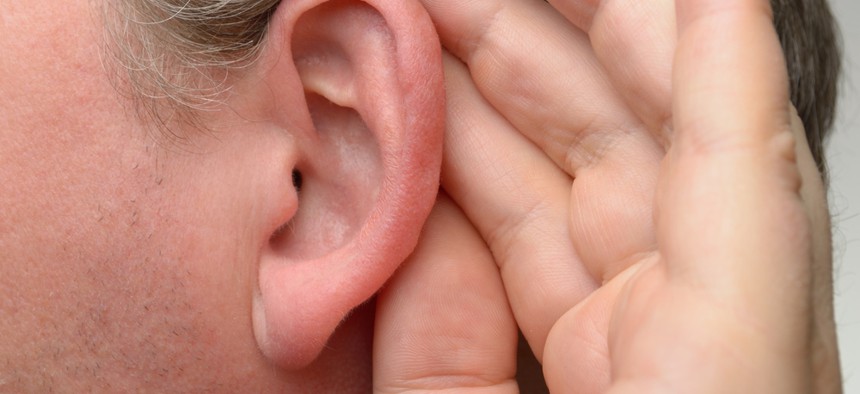Increasing Local Government Accessibility With ‘Hearing Loop’ Systems

AFPics / Shutterstock.com
Technology being wired into public facilities can help citizens who are hard of hearing.
Imagine sitting in a municipal building during a local city council meeting. The microphones on the dais might not be working all that well. The acoustic ceiling tiles in the room might not be all that acoustic. And there might be an elected official speaking whose voice might be muddled and hard to hear through the microphones.
Now imagine that scene if you are hard of hearing. In that situation, it’s hard for the public to participate in civic matters if they can’t actually understand what’s being said.
"City council is a very verbal environment. It's really important to hear what’s being said from the council and from the audience, and this system allows us to do that as a normal hearing person would," Ann Belfiglio, the Colorado Springs chapter president of the Hearing Loss Association America, told KRXM-TV.
More local governments, including the one in Colorado’s second-largest city, are turning to assistive listening systems to improve access in public facilities for those who are hard of hearing.
Colorado Springs City Hall was recently wired for a Hearing Loop system and it went into service on Monday for a city council work session.
According to a recent announcement from the city of Colorado Springs:
The system, a hearing aid compatible loop, magnetically transmits sound to hearing aids and cochlear implants with telecoils (T-coils), allowing hearing devices to serve as wireless, customized amplifiers for one’s own hearing loss. . . .
The majority of hearing aid models come with T-coils, and residents can contact their audiologist to find out how to activate them. For those who do not have T-coils in their hearing aids, there is a loop receiver, similar to FM headsets, which can be used with earbuds or single earphones.
The system was funded through the city of Colorado Springs Housing & Community Initiatives Division and the $7,000 installation fee was financed in part through community block grant funding, according to the city.

While Hearing Loop systems are often used in churches and other religious facilities, right now, there are only a handful of public sector facilities in Colorado that have assistive listening systems including the Fort Collins City Council chambers, Fort Collins Police Services building, the Boulder County Commissioners hearing room and libraries in Garfield County, among others.
Hearing Loop systems have been gathering steam in recent years across the United States, a Scientific American blog post noted in 2013:
. . .[T]he accelerating move to hearing loops in the USA—sparked by local and national hearing loss associations and now supported by a new cottage industry of hearing loop vendors and installers—has led to thousands of newly looped venues. Some venues are small, such as New York City’s 450 subway booths and all its future taxis. Some are bigger, such as auditoriums and worship places. And some are huge, such as airports and Michigan State University’s basketball arena.
The first airport facility outfitted with a Hearing Loop system was Gerald R. Ford International Airport in Grand Rapids, Michigan, in 2008, which was expanded in 2012.
NEXT STORY: A Day in the Life of an L.A. Graffiti Buster






